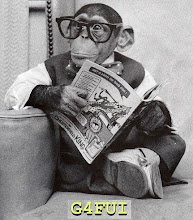The purchase late in 2012 of a "
FunCubeDongle Pro+" opened up a new world to me - those parts of the "Low VHF" spectrum away from the amateur bands, or to be more accurate, away from the amateur 6metre (50MHz) band.
Very soon I homed in on a "new" target for meteor reception of the
Skalafell TV transmitter in Iceland. This transmitter is allegedly due for closure at some point in 2013 as part of the Europe-wide "Digital Switchover" so I was naturally keen to make use of this before the big switch-off.
I quickly found that it was an excellent target for meteor reflection reception, being at more or less the optimum distance away, high power (presumably) and on the air (as it turned out) 24/7.
This year's
Eta Aquarid meteor shower coincided with a public holiday which meant that I wasn't working and therefore was able to pay pretty close attention to the "goings on" on all my meteor targets, and it wasn't really a surprise when I started to get some pretty impressive results on this channel (
E4 - 62.25MHz).
However, what was a surprise was the realisation that I was receiving TWO signals, the second and surprise one being a few hundred Hz below the main one.
What was really interesting to me was the similarity in some ways and difference in others between the characteristics of the received signals.
There were many occasions when coincident reflections were received, and others when there were completely separate reflections.
Similarity suggests that the two sources are relatively close together, and difference suggests that they are not _that_ close.
At the moment I am working on the assumption that they are both from Iceland, but possible in geographically separate parts of that country.
This has been further supported by a more "normal" spell of observation today when meteor activity is at a "normal" level, and, with this being early summer, some tantalising hints of more exotic propagation modes, namely "Sporadic-E".
Again I have seen many examples of "co-incident" reflections (Sporadic-E ones seem to be co-incident in general), and non co-incident ones.
According to the "
G0CHE" Band I TV information web page there are indeed two (suspected) Icelandic TV transmitters on channel E4, though the frequencies quoted on that site don't quite stack up with my own observations, unless the "new" signal is really
Skalafell, and the one I have been referring to as
Skalafell is actually
Gagnheiði.
Any help in unraveling this mystery would be appreciated!

Hi Martin great blogger
ReplyDelete